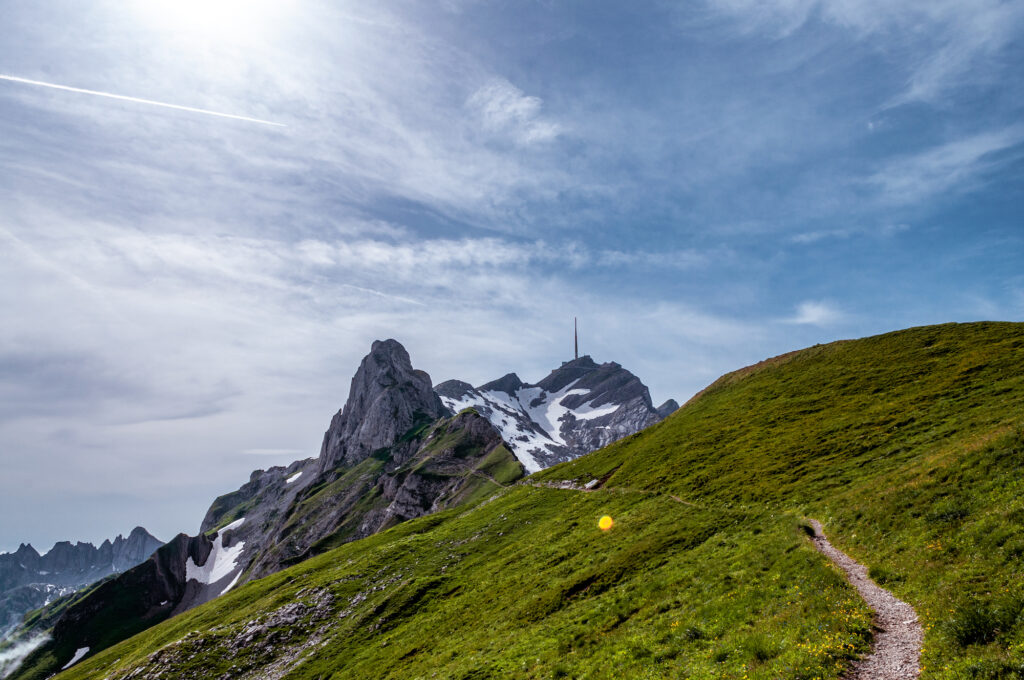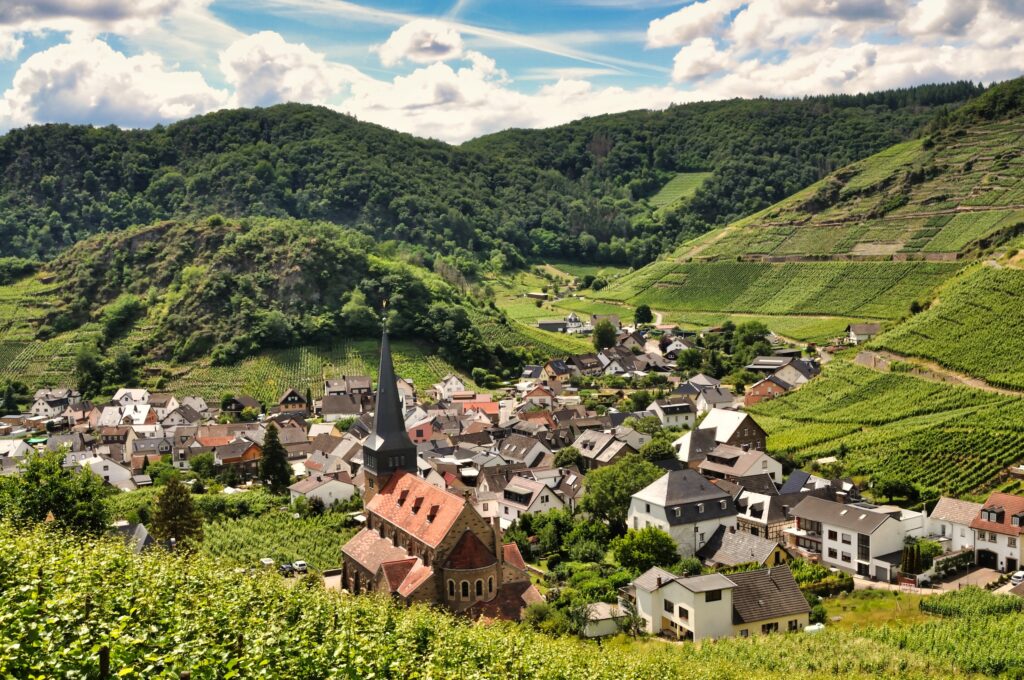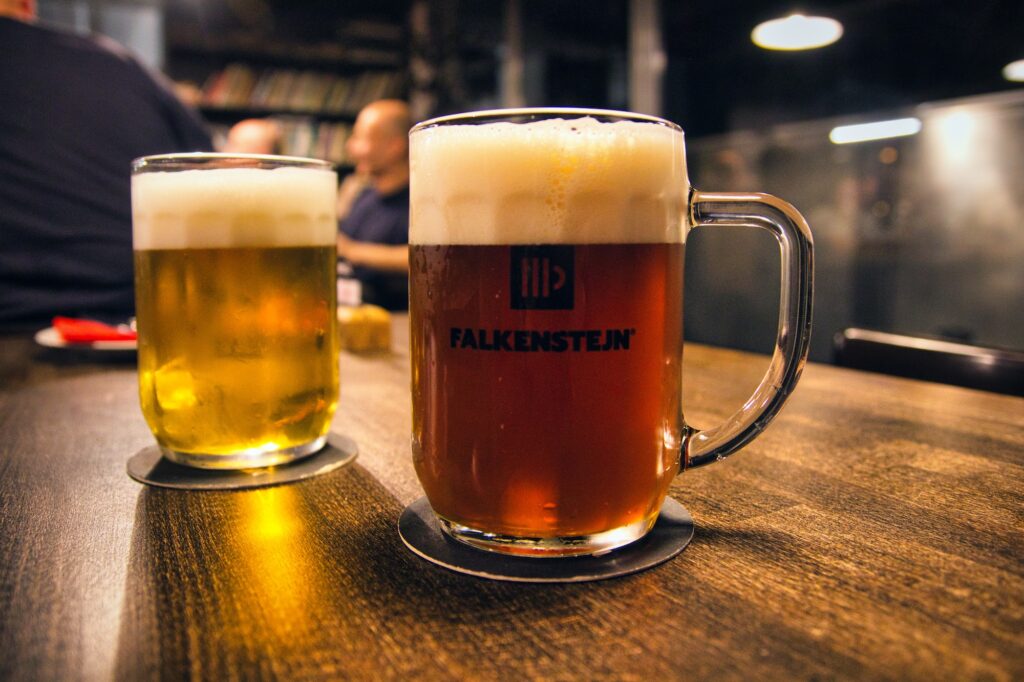Germany’s cider scene is blooming. In the state of Hessen, German cider—otherwise known as Apfelwein, Schoppe, or Ebbelwoi—is one of the area’s most popular drinks. Its history stems back five centuries, when local vineyards fell victim to a virus, forcing the farmers to replace beloved grapes with apples. Since then apple culture in the area has been rife with taverns dedicated to alcoholic-apple delicacy, and many festivals being held during the harvest season.
Trail:
Hanau – Frankfurt
Distance:
40km
Pressing Business
Compared to its other European cider-counterparts, Apfelwein is not carbonated, nor is it very sweet. Made from Granny Smith or Bramley apples, Apfelwein is mainly flat, tart, with varying degrees of sourness. The apples are pressed and served cold and in blue clay pots, called bembels. The drink is then poured into small, etched clear glasses called gerippte – appropriately named, so that the drinker is less likely to loose grip whilst in moments of intoxication.
Needless to say, there is a hiking route running through the local orchards, passed the Keltereien (pressing plants) and specialised shops. The Apfelwein Road, or Die Hessische Apfelweinstraße, runs from the picturesque village of Steinheim, all the way into Frankfurt; from the countryside all the way into the big city taverns. It’s a 40-km trek from Steinheim, through Hanau, up along the northside of the Main River, through the green-belt and into Frankfurt city centre. The route seems to have been forgotten by the authorities, and not very well maintained. At some places you can still find the red-apple sign attached to the walls and bollards, but don’t count on seeing them at all places along the way. The only remaining map I can find online for the route is HERE.
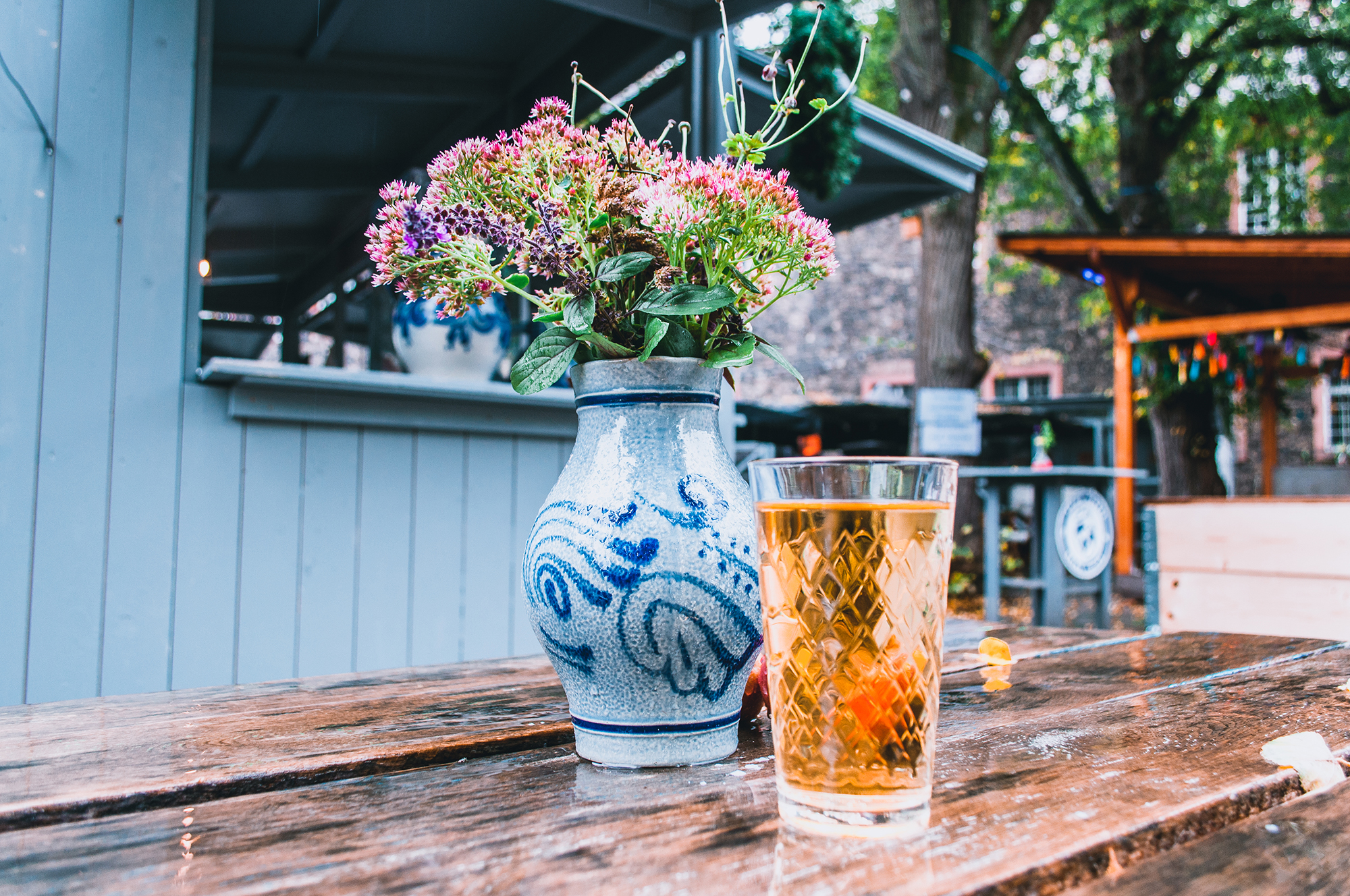
Cider Street
Starting at Steinheim station, head south on Ludwigstraße until you reach the old town centre, with its Fachwerkhäusern and castle ramparts. Here you must stop off at the Maa Äppelsche, one of the best regional Apfelwein taverns, where there are lots of regional varieties to sample. Head back north along the river, cross the river, then follow the footpath north beneath the bridge towards Kesselstadt. If you didn’t make time to pop into Hanau, then it’s worth doing so, if not just to visit the Apfelwein cultural centre or market.
Turn north on Kastanienalle, and then northwest on Wilhelmsbader Allee, through Staatspark Hanau Wilhelmsbad and across Kesselstädter Straße. As you cross the road coming out of the park, a footpath leads you through the woods to Wachenbuchen. As you leave on Am Weides, there will be ample sign-posts directing you through the orchards and farmyards towards Hochstadt. Just outside the town is the Hoehl Landkelterei, where you can visit and see how the Apfelwein is made – although it’s worth checking opening times before you plan your trip. As you head out of the town on Am Kreuzstein, you also need to visit Kelterei Stier, a great local shop and outlet for many local Apfelwein brands.
From here there’s many more orchard walks as you head alongside and through the Reid stream and nature reserve. At the end of the route head north in a counter-clockwise direction up on Vilbeler Landstraße through Bergan Enkheim, As you start passing through the Frankfurt Greenbelt, the path will head down south the park and fields to Lohrpark, where you can visit the community run MainÄppelHaus, an Apfelwein centre with many treats, good, and drinks on offer.
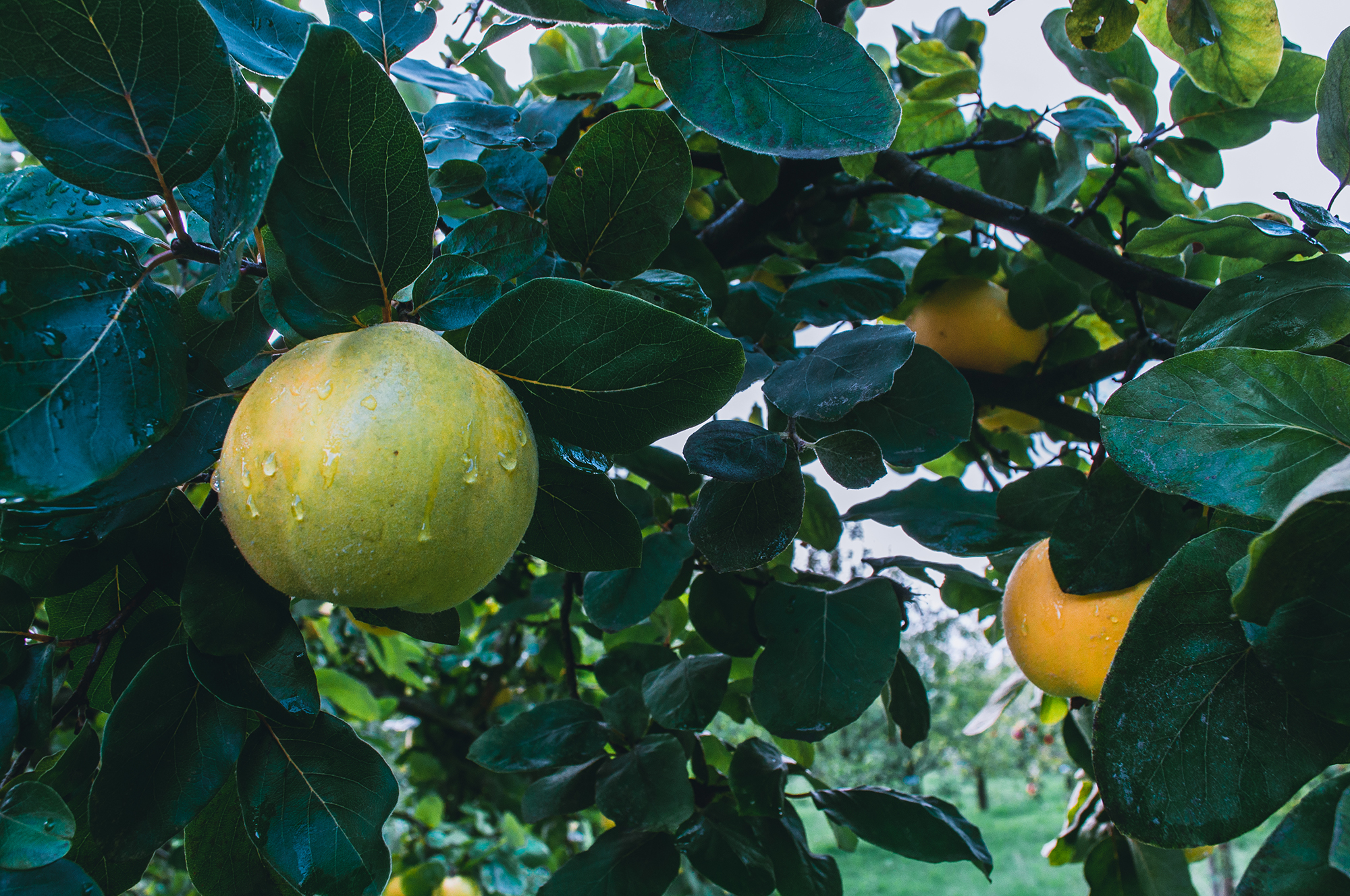

From you here, you’ll be rewarded with great views of Frankfurt as you head down to Seckbach, where there are a couple of guesthauses which you can pop in and grab a drink. Head south on Wilhelshöher Straße, crossing the motorway and heading into Bornheim. Find your way onto Berger Straße and carry on into the centre of Frankfurt, through the bustling cosmopolitan neighbourhoods, past many Apfelwein taverns and bars on the way.
At Bethmanpark, head clockwise south towards Ignatz Bubis Bridge, crossing the Main into the city centre. There are many recommended places here to visit, out top selections include Ebbelwoi Unser, and Apfelweinwirtschaft Frau Rauscher (where the notorious statue of the spitting Rauscher stands outside). The must-visit however is the Adolf Wagner, a magnificent, traditional tavern, filled with welcoming staff, and great Apfelwein food pairings (lots meats, sausages, and potatoes).
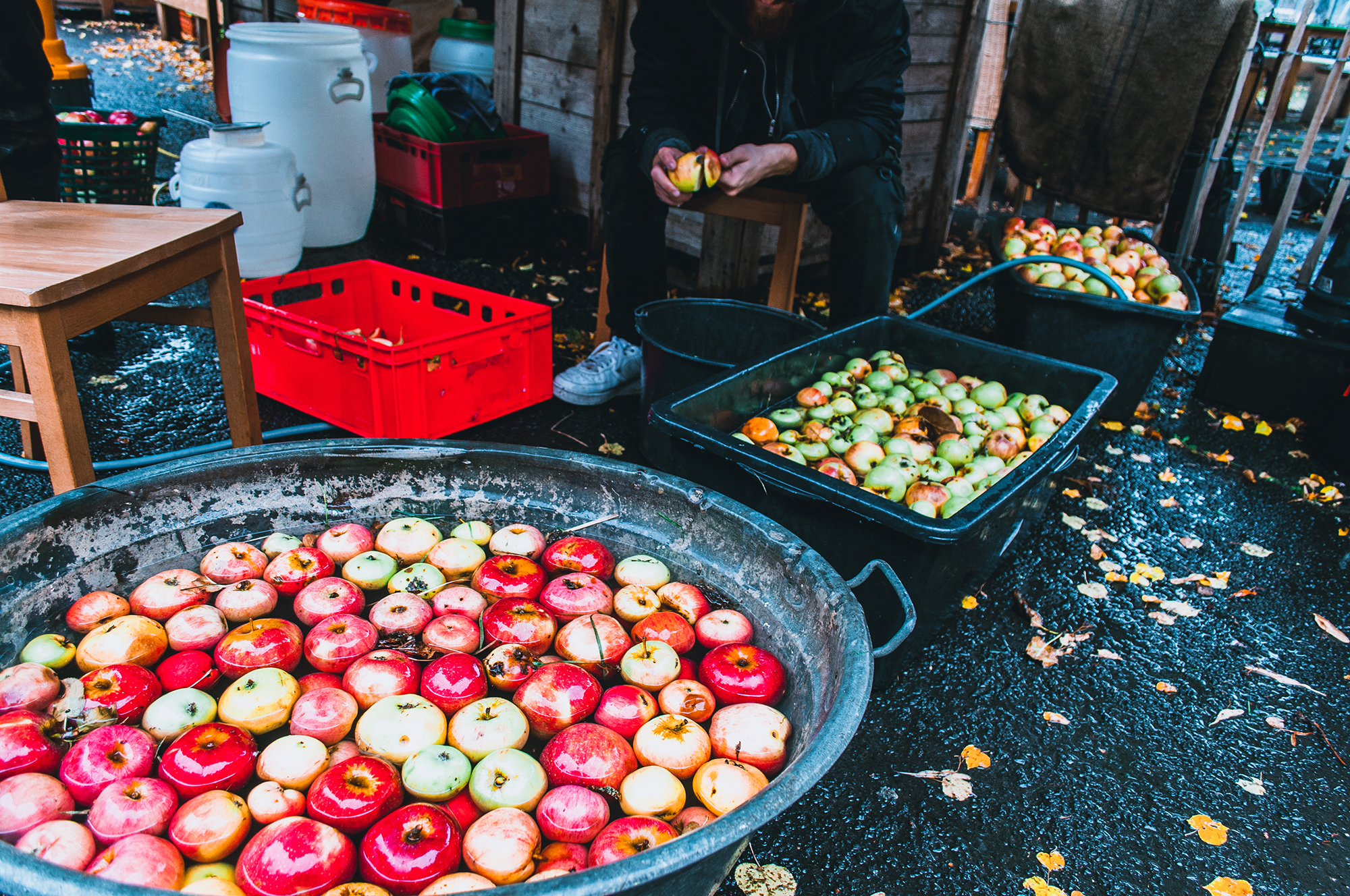

Although the route has lost some of its signage, and thus some of the value and charm has gone, it does provide a great escape in to the countryside of Hessen. Directly outside of Frankfurt there is little Apfelwein culture to enjoy, and should you want to vastly reduce the hike, you could start from Bergen-Enkheim or even Bischofsheim. What is great about this however is the deep-dive you can make into this very regionalised culture. While most people associate wine and beer with Germany, ganging an understanding of Apfelwein culture will help you better understand how the Hessische locals function. And besides all that, you’ll enjoy some dry, tangy and crisp apple drinks along the way.
Photos: Daniel Cole
You can read the original article I wrote about this journey for Discover Germany.


